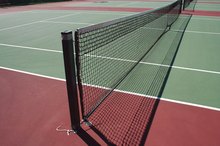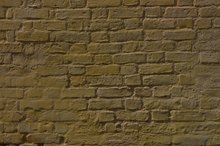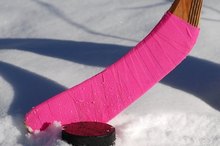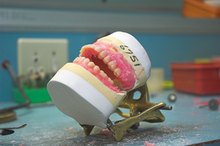How to Maintain a Clay Tennis Court
Traditional clay courts are composed of natural or processed clay that is mixed, crushed, screened, and blended with sand and salt. A less expensive alternative is similar in texture, but is composed of natural stone, brick, or tile that is crushed, ground and screened. Both types of clay provide a softer playing surface than hard courts. Most recreational players, particularly those over the age of 50, prefer playing on clay. However, maintenance is much more time intensive and more expensive than hard courts. To maintain them, you must be diligent in following a regular schedule.
Daily Maintenance
Brush the entire court surface using the drag brush. Use a drag mat if the court has excess leaves, pine needles, stones, or other large debris particles. Brush after each match or, if the courts have not been used, brush at the end of the day
How to Clean a Tennis Court
Learn More
Clean the lines/tape with the line sweeper. Be sure to roll the sweeper over the center of the lines and completely brush the clay off of the tape.
Water the courts thoroughly and uniformly. Most clay courts will have some sort of sprinkler system installed. If there is no such system, a garden hose with an adjustable nozzle will work. Set the nozzle to a medium-fine spray and gently water the courts. Avoid over watering and forming puddles on the court. Also avoid spraying the water too hard, which can cause the courts to erode.
Advantages & Disadvantages of Gabions
Learn More
Roll the courts using the court roller. This helps compact the clay and reduce erosion. It also helps improve moisture retention and court drying time.
- Brush the entire court surface using the drag brush.
- Also avoid spraying the water too hard, which can cause the courts to erode.
Patching Depressions and Holes (As Needed)
Scarify the low area with a lute or other scarifying equipment. To “scarify” is simply to rough up and loosen the compacted clay. A lute is a special, heavy duty aluminum rake with reinforced teeth on one side and a smooth straight edge on the other. It is used to scarify, level, and spread the clay.
Spread new clay onto scarified low area and level with the smooth edge of the lute.
Hand water and roll the low area. If the low area is particularly deep, you may need to repeat this process.
- Scarify the low area with a lute or other scarifying equipment.
- To “scarify” is simply to rough up and loosen the compacted clay.
Top Dressing the Courts (Monthly/Annually)
Scarify the entire court surface and patch any low area/depressions/holes as described in previous section (make sure the court is dry).
Apply new clay using a spreader.
Level the newly spread material.
Water and roll the court.
Tips
For high-use courts, top dressing should be done monthly. Otherwise, annually is fine.
When If top-dressing monthly, use approximately eight bags of clay material (80-pound bags) per court.
When top-dressing annually, use approximately 50 to 70 bags per court.
Court rollers are expensive. Daily rolling of the court is not vital to maintaining the court’s integrity. You can skip this step in the daily routine if a roller is cost prohibitive.
Court rolling is a crucial step in properly patching low areas and in top-dressing. If buying a court roller is cost prohibitive, you should consider hiring a company that specializes in court construction/repairs to handle these important tasks.
- Scarify the entire court surface and patch any low area/depressions/holes as described in previous section (make sure the court is dry).
- Apply new clay using a spreader.
Related Articles
References
Tips
- For high-use courts, top dressing should be done monthly. Otherwise, annually is fine.
- When If top-dressing monthly, use approximately eight bags of clay material (80-pound bags) per court.
- When top-dressing annually, use approximately 50 to 70 bags per court.
- Court rollers are expensive. Daily rolling of the court is not vital to maintaining the court's integrity. You can skip this step in the daily routine if a roller is cost prohibitive.
- Court rolling is a crucial step in properly patching low areas and in top-dressing. If buying a court roller is cost prohibitive, you should consider hiring a company that specializes in court construction/repairs to handle these important tasks.
Writer Bio
Based in upstate New York, Teresa Nagel has been freelance writing since 1994. She has written for an assortment of publications, including "Today’s Christian Woman," "Lefthanders International," "The DeltaSig" and "The West Seattle Herald." She holds a Bachelor of Science in nautical science from the U.S. Merchant Marine Academy.









